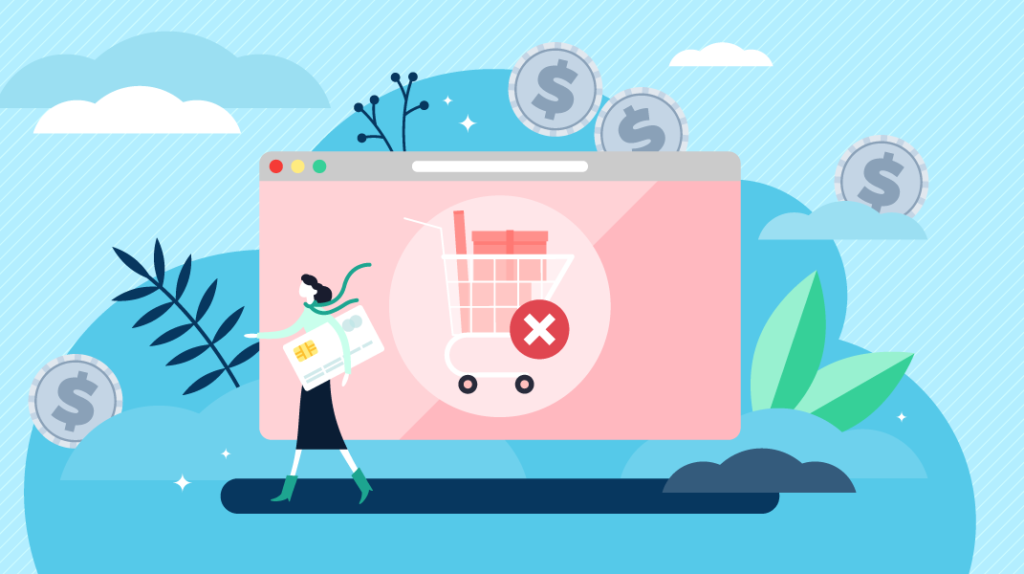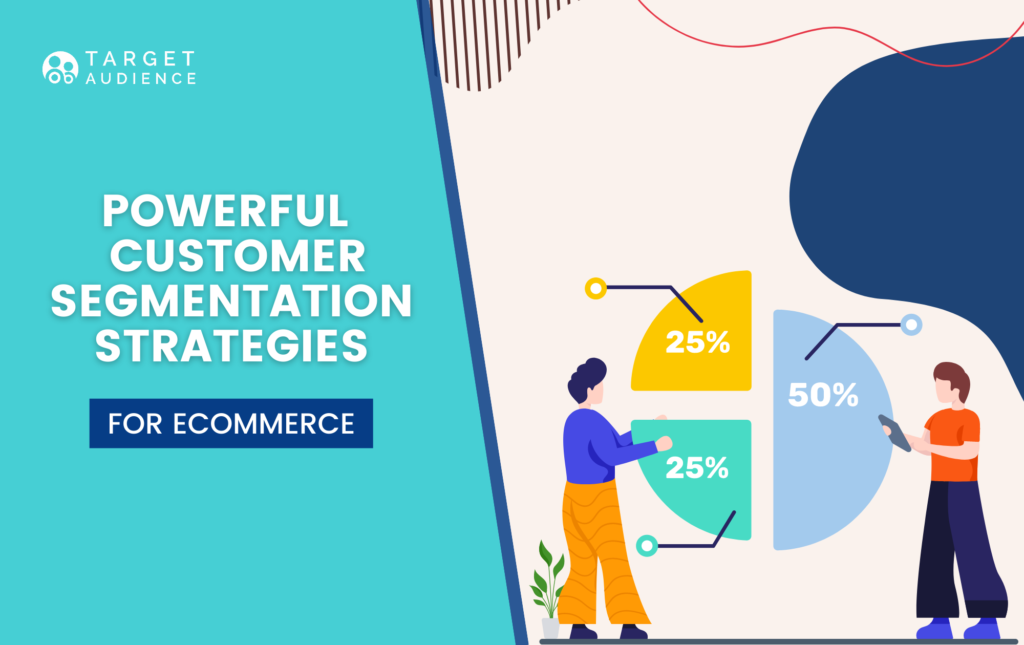Targeting is key to reaching your ideal audience—that’s a no-brainer. Effective targeting is impossible without customer segmentation. After all, no business has a uniform customer base that shares the same traits and needs.
In a nutshell, customer segmentation means dividing your customers into groups that share the same characteristics. These characteristics can be based on demographics (age, gender, location), psychographics (lifestyles, interests), or behavioral data (past purchases, engagement levels).
By segmenting your customers into such groups, you can personalize your communication and marketing and, as a result, improve your ROI. So what’s the best way you can approach this task as an online business owner? There are a few common ways for Ecommerce customer segmentation. In this article, we’ll break down the most popular segmentation strategies and how they compare to one another.
What Is Traditional Marketing Segmentation?
The traditional segmentation approach, called marketing segmentation, divides customers based on the following bases:
- Demographic segmentation – Demographic segmentation models group people based on criteria like age, generation, gender, education, occupation, income, marital status, religion, and ethnicity.
For example, a company may want to target women aged 18-35 who have an annual household income between $30K-$50K, because this customer segment has the highest purchasing power for the company’s product/service. - Geographic segmentation – Geographic segmentation models group people based on criteria like country, city, state, region, climate, or market size. You need to consider factors like customers’ local culture, holidays, and the weather. For example, a restaurant will put more effort into targeting those within its area of delivery.
- Behavioral segmentation – Behavioral segmentation models group people based on their behavior and actions, such as purchasing history or engagement with certain websites and social media channels.
For example, a company may want to target customers who abandoned their cart, or those who tend to browse but never buy anything. Other factors that could be used for ecommerce customer segmentation include preferred payment methods, the time of day customers do their shopping, and more.
- Psychographic segmentation – Psychographic segmentation models group people based on characteristics such as personality traits, values, and interests.
For example, a company may want to target creative people who love traveling. This approach is based on the assumption that people’s motivations and resources determine how they express themselves in the marketplace. In other words, people buy things to shape the way they want to be perceived by themselves and others around them.
Traditional Marketing Segmentation vs Modern CRM Segmentation
Although the psycho-sociological segmentation methods above can be divided into many sub-groups, they are still very generalized and often outdated. For example, just because a customer is female doesn’t guarantee that she will be interested in the same items as other female customers.
These significant drawbacks make psycho-sociological segmentation much less efficient than we once thought. Over time, behavioral segmentation evolved into modern customer segmentation, often referred to as CRM segmentation.
As opposed to marketing segmentation, modern customer segmentation is based on data and user behavior, which is becoming more and more precise thanks to technological advancements.

Modern technologies give ecommerce business owners and marketers much more insight into customer behaviors. They allow you to track your customers’ behavioral patterns during their whole customer lifecycle, and as a result, the segmentation is much more factual and accurate.
There’s no need to make guesses or assumptions about your customers based on their location or culture when you have real-time data that allows you to build much more complex and holistic profiles.
Moreover, you can combine behavioral data-based segmentation with different ecommerce metrics such as conversion rate, customer acquisition cost, average order value, and repeat purchase rate.
So what do modern segmentation groups look like? Here are some of our favorite segmentation strategies that are proven to drive sales and increase revenue.
6 Data-Based Ecommerce Customer Segmentation Strategies
1. Based on Past Purchase Behavior
We’ve said it before and we’ll say it again – persuading an existing customer into making a repeat purchase is much easier and more cost-effective than acquiring a new customer.
Digging into your existing customers’ data will give you priceless information. Based on previous purchase data and online interactions, the customers are segmented into sub-groups like price-conscious, need-proof, risk-averse, and delegator (I’ll get it later).
Once your ecommerce customers are segmented into these categories, converting them using the right messaging is much easier. Let’s say you highlight the price-conscious segment. You know, for example, that a bag of dog food lasts for about 3 weeks. You can target those customers with a reminder at the beginning of the third week or offer bundles on related products. Similarly, the ‘need proof’ segment can be targeted with user testimonials and reviews to establish trust.

2. Based on Browsing History
A discount code or piece of gated content effectively convinces website visitors to leave their emails or even create an account. Once you have registered browsers, you can track their behavior and see which customers return to your websites and how long they browse.
Repeat visits and prolonged browsing mean that the user is likely genuinely interested in your products. Encourage serial browsers to shop for the first time by offering a special discount for the first order or run a remarketing campaign based on the categories and products they viewed.
3. Based on Cart Abandonment
Returning customers may have higher conversion rates than new visitors, but nothing guarantees that any visitor will actually complete a transaction.
Cart abandonment is one of the biggest challenges ecommerce business owners face. As the name suggests, cart abandoners are customers who fail to complete the purchase after adding one or more products to their shopping cart. While it can happen because the customer was interrupted, there is a considerable number who decide not to buy after seeing the shipping fee or realizing the product doesn’t meet their needs.

Cart abandoners are a tough ecommerce customer segment to approach. You must encourage them to return to your website and complete the checkout process. Sending a “come back” email can do the trick, but don’t make it generic. Divide the cart abandoning segment into sub-groups based on the level of interest and product. Then you can send a custom message to each sub-group, adding links to similar products or offering a discount code.
4. Returning Customers
So you’ve reached a point where customers trust your brand enough to keep returning and making repeat purchases. That’s great! Not only do these returning customers provide a steady flow of revenue, but they are also likely to recommend your products to their friends, family members, and colleagues.
Do not take returning customers for granted. Retain their interest in your store and make them feel that you appreciate their business. Here are a few ways you can reward loyal customers:
- Create a points program
- Actively request their feedback so you can continue meeting their needs
- Send unique offers/discounts that are not available to other customers
- Offer discount tiers based on the number of orders they place
5. Content Marketing Leads
Content marketing is a super-effective way of conveying your ecommerce store’s message, building your brand, and drawing in new customers by offering them valuable or entertaining content.
If you have invested time and resources into a newsletter, blog, or guide, it’s important to leverage those channels to encourage readers to convert. Here are a few ideas on how you could do this:
- Send out updates on new products and features in your newsletter, or give special offers to newsletter subscribers.
- Provide insider tips, tricks, and other valuable information related to your products.
- Subtly include products in the content. It’s important to avoid hard-selling and only do it in the right context.
Final Thoughts on Ecommerce Customer Segmentation
The most important takeaway is that while different products may have niche customer bases, it’s still never a uniform group of the same people. Lumping all your customers under one umbrella – your core perfect customer persona – is a mistake and unfortunately, it’s a trap many ecommerce businesses fall into. Proper segmentation is one of the most important strategies to truly maximize your revenue and give you a competitive advantage.
The two main segmentation approaches are marketing segmentation, which relies on psycho-sociological factors, and behavioral (or CRM) segmentation, which is based on data and user behavior. The latter has become much more prevalent in recent years because it tends to be more precise and effective.
The idea is to use the information you have about users’ shopping and browsing habits, to provide products, services, and offers that best match their interests, and make the experience as convenient as possible for them.
Make sure that the data is updated regularly and make informed decisions. The strategies above are sure to help you realize the full potential of your brand.



